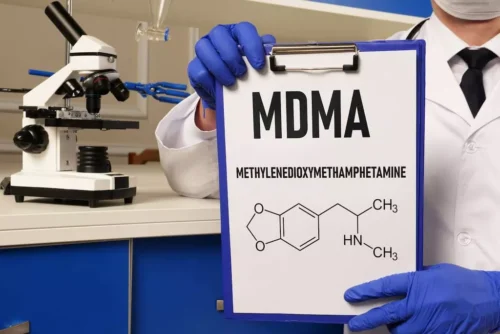
Individuals who have difficulty metabolizing alcohol sometimes experience alcohol flush. The condition is also known as the “Asian flush” because it’s more common in people of Asian descent, but anyone can experience a flushing reaction after drinking if they have a certain gene mutation. Hangover symptoms like excessive sweating, dehydration, and hot flashes can last up to 24 hours after your last drink.
VII. Tips for Reducing Discomfort After Drinking Alcohol

However, as mentioned above, one should be careful when drinking in cold weather. The feeling of warmth may actually mask a drop in body temperature, and sweating makes you more likely to catch a chill. In extreme cases, some people have actually died from hypothermia after spending too much time in cold weather why does alcohol make you hot while drunk. Since alcohol disrupts your body’s temperature regulation, it can also cause further sweating as the night goes on. While many people naturally experience a body temperature drop overnight as they sleep, studies show alcohol might actually block this natural cycle when one is intoxicated.
heartfelt photos of celebrities who normalised breastfeeding

Sports drinks and bouillon are good choices to help your body replace the water, salt and potassium you lost when you were drunk. You may feel like you have a high temperature after drinking alcohol because of how alcohol affects your brain. Medical professionals think that alcohol tricks your brain cells into thinking that you are warm. In other words, alcohol tends to move heat to the perimeter of your body—making you feel warmer, while the core of your body is actually cooling down.

Alcohol intolerance
Medicines that disguise the symptoms of alcohol intolerance may make you feel like you can drink more than you should. The Dietary Guidelines for Americans defines “moderate” drinking as up to one drink a day for women and up to two drinks a day for men. One 2013 study showed that people who get flushed after drinking may have a higher chance of developing high blood pressure.
Fatigue, jaundice, abdominal pain, and elevated liver enzymes are common early signs. Alcohol-related liver disease also does not usually cause symptoms until the liver is severely damaged. A person should speak with a doctor if these symptoms do not improve. Without diagnosis and treatment, it could lead to liver complications.
But why does this reaction happen to some of us, and not all?
This is because beer and wine have a lower alcohol content and take longer to drink, allowing the body more time to adjust to the increased heat production. People who experience night sweats regularly after drinking may have an issue with alcohol. There are many risks of long-term alcohol use, including cancer and liver damage. For this reason, experts recommend seeking help if a person experiences persistent night sweats related to alcohol consumption. People who drink heavily or regularly may have night sweats several hours or days after consuming alcohol.
Night Sweats and Alcohol: Why Alcohol Makes You Hot
Drinking alcohol can be a form of “self-medication” used to unwind from workplace stress or ease study pressures, making it less “aqua vitae” (water of life) and more and “Aqua ad vitae” (water to counteract life). And more than 2,600 years ago the Greek poet Alceus suggested that “we must not let our spirits give way to grief … Best of all defences is to mix plenty of wine and drink it”. The conversion of alcohol into metabolites generates heat, which contributes to an overall sensation of warmth. Daily drinking can have serious consequences for a person’s health, both in the short- and long-term.
Treatment Process
- However, it’s important to know the signs of alcohol poisoning, especially after an episode of binge drinking.
- A student at Onondaga Community College, in Syracuse, New York, was also found dead earlier this year as a result of hypothermia and alcohol intoxication, according to syracuse.com.
- Normal human body temperature is in the 98.6˚F/37˚C, so when you drink alcohol, it’s really your own body heat that activates the heat receptors.
Perhaps the most common myth about the benefits of alcohol is the idea that an occasional glass of red wine boosts heart health. Due to the hangover inducing a fight-or-flight response, hot flashes may occur while you are drunk and feeling hungover. Additionally, an April 2016 meta-analysis published in the Journal of Menopausal Medicine demonstrated that, though not to a great extent, obesity is linked to an increased risk of hot flashes in women. Hot flushes after drinking alcohol can happen for a variety of reasons, including drinking too much or as a symptom of a hangover.
Enjoy drinking again and get Sunset Alcohol Flush Support for33% off while stocks last!
Alcohol acts as a vasodilator, widening blood vessels and increasing blood flow to the skin’s surface, leading to a sensation of warmth. It goes without saying, but the best way to avoid hot flashes from alcohol is to limit our consumption of alcohol or not drink at all. If we do choose to drink, it’s always important to drink in moderation. If you want to minimise how hot you get when drinking, try drinking alcohol slower. This will give your body a chance to metabolise it without overloading your liver.
While hot flushes can be normal in certain situations, such as during menopause, they can also indicate underlying health issues and alcohol abuse. With alcohol intake, the blood vessels in the skin tend to widen when the heart rate speeds up. Despite the fact that we may opt to partake in a night cap, research shows that certain doses of alcohol may reduce the amount of slow wave and REM sleep we have.
